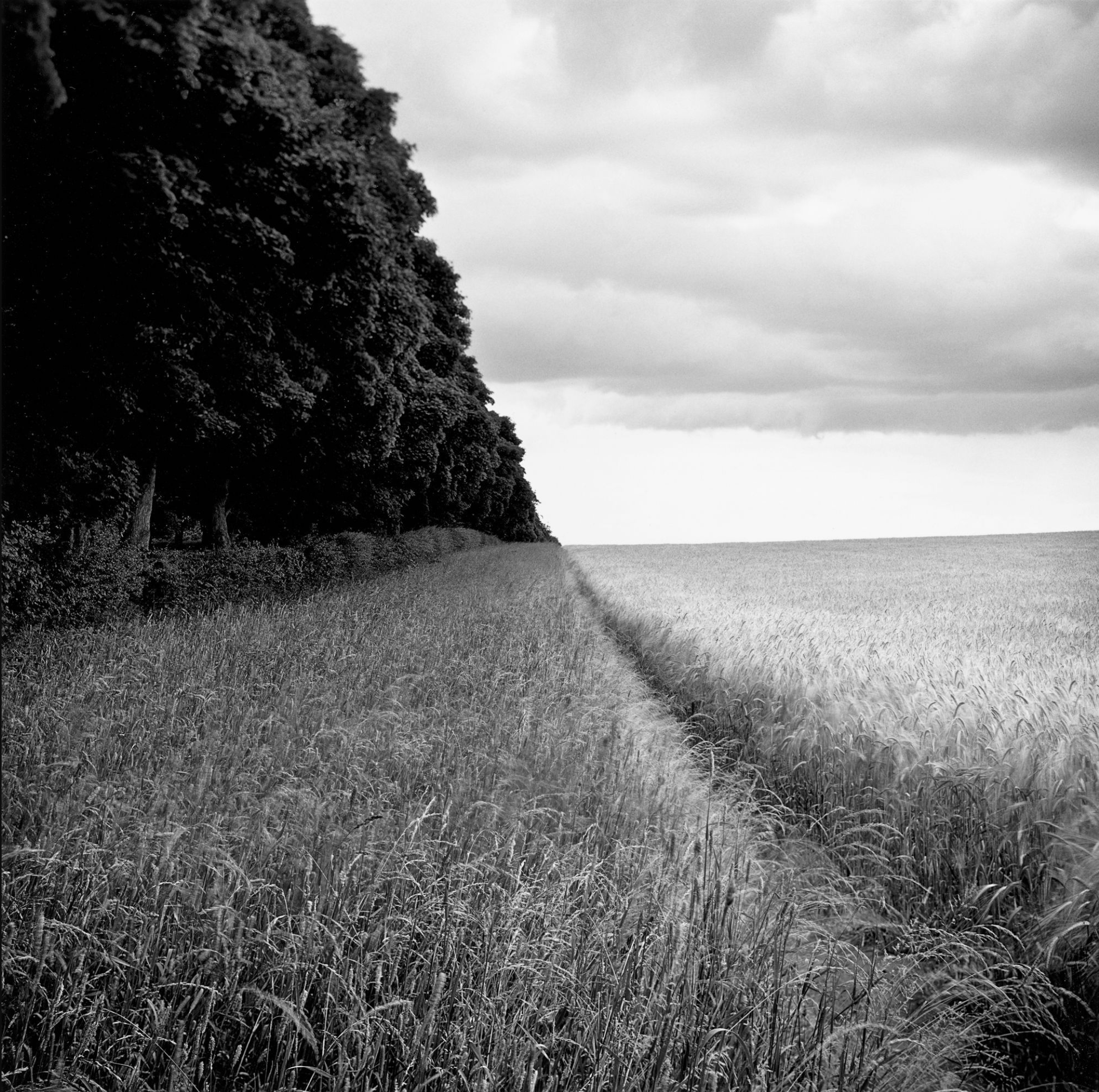Paul Hart: Black & White Meditations on Place
“Anmer”
- Paul Hart
“It’s not what you look at that matters, it’s what you see.” That quote, attributed to Alexander Strecker in a feature on Paul Hart, captures the essence of the British landscape photographer’s work. Hart has spent over 35 years exploring the intersection between land, memory, and meaning, working almost exclusively with medium-format black-and-white film. He develops and prints all his images by hand in his own darkroom, a process that matches the quiet depth of his subject matter.
Born in 1961, Hart is best known for his long-term photographic investigations of the English landscape, especially the flat, agricultural Fenlands and the dense pine plantations of Derbyshire. His images aren’t just about the land as scenery. They’re about how we interact with, alter, and are shaped by the spaces we inhabit.
Among his most celebrated projects is Farmed (2009–2015), the first of what would become his Fenland Trilogy. Shot in the reclaimed marshlands of eastern England, Farmed captures a sense of stillness laced with tension—straight furrows stretching endlessly into the horizon, drainage channels dividing the earth with clinical precision. Drained (2016–2017) and Reclaimed (2018–2019) continued this exploration, documenting the physical and metaphorical layers of control, erosion, and memory embedded in the land. His earlier work Truncated (2005–2008), focused on a single pine forest in Derbyshire, reads like a quiet portrait of nature pressed into formality. More recently, Fragile (2020–2024) turns inward, examining the vulnerability of natural spaces close to Hart’s home.
His international recognition matches Hart’s mastery of analog technique. He was the inaugural recipient of the Wolf Suschitzky Photography Prize in 2019 and has been nominated for both the Deutsche Börse Photography Foundation Prize and the John Ruskin Prize. His work has been exhibited widely, including solo shows at The Photographers’ Gallery (“Poetry of Place,” 2018) and Fen Ditton Gallery (“Edgelands,” 2020), as well as several appearances in the Royal Academy Summer Exhibitions. His prints are held in collections, including the Victoria & Albert Museum, the MoMA Library, the Hyman Collection, and the Martin Parr Foundation.
What makes Hart’s work especially inspiring is his practice of slow, attentive seeing. Rather than chasing novelty or spectacle, he urges us to look again—more deeply—at the ordinary. His images reveal the silent dialogues between people and land: the furrows and fences, the ordered fields and creeping wildness. And through his continued use of medium-format film, he demonstrates that traditional photographic processes still offe clarity, intention, and tonal range.
Learn more:
Today’s photo challenge is inspired by Hart’s approach: “Quiet interaction.” Head out with a calm and curious mindset. Observe where the landscape and human presence overlap. It might be a fence line cutting through golden fields, ripples where a footpath meets water, or the hush of telephone wires crossing open sky. Whether you shoot on film or convert a digital photo, pay special attention to shape, texture, and mood—let the image whisper rather than shout.
If Hart’s work resonates with you, let it inform your own practice this week. Share your interpretation using #AODailyLight and tag @artisanobscura. We’d love to see what you discover.
In a world moving faster every day, Hart reminds us to slow down, to observe, and to uncover the quiet stories hidden in our surroundings. There’s profound beauty just beyond your doorstep—if you know how to see it.
Let’s go find it.
All the best,
Drew

